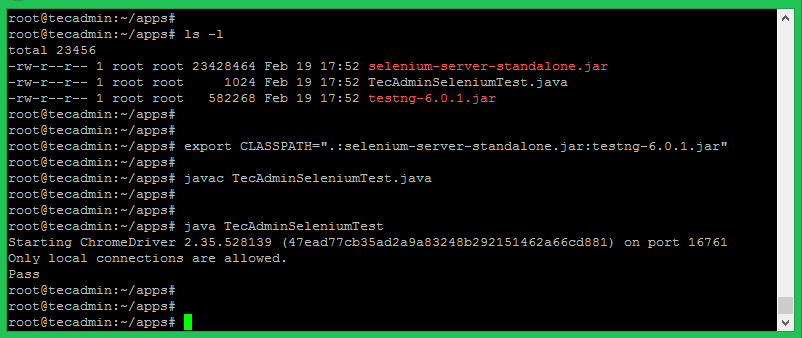

You’ll also probably need to add the driver to your executable path, i. With this, you are all set to use the Docker Desktop with WSL 2 backend.

Set WSL 2 as the default version using the command: 1 wsl -set-default-version 2 Restart the machine for the changes to take effect. What to do with the binary to get it to work Download the WSL2 Linux kernel update package for the 圆4 machine and install it on the host machine. Be sure you are downloading it from a reputable source. The Selenium Server is required to run Remote Selenium WebDrivers. You can download the executable for Linux and use it directly on CSIL. Since you will not have permission to install it in the “standard location” (since you are not root), you’ll need to follow the instructions given for a installing the driver in a non-standard location Firefox See the instructions below for what to do with that binary under What to do with the binary to get it to work Be sure you are downloading it from a reputable source. If you follow the link for Downloads, and Linux you’ll find a file called chromedriver_linu圆4.zip which you can download, unzip and then use directly on CSIL. WebDriver (part of Selenium 2) is a library for automating browsers, and can be used from a variety of language bindings. This article presented various reasons and respective solutions to rectify the “ no module named selenium” error in Python.Setting up your driver How do I get a selenium driver? Chrome Answer (1 of 6): This is a quick introduction to Selenium WebDriver in Python on Ubuntu/Debian systems. To resolve this error in Windows and Linux, you need to install the “ selenium” module using the “ pip” and “ apt” commands.

The “ no module named selenium” error occurs when we try to import the “ selenium” module without installing it in Python. To solve this, we need either to select the version that is installed in our system or install the module in the editor shell manager. In our scenario, we are using a “ thorny” IDE in the virtual environment that is not connected to the globally installed version of Python. Another reason is that we install it correctly in cmd, but our Python IDE runs an incorrect version of Python. This error also arises in a program when we installed the package globally in our system but forgot to install it in a virtual environment. Alternate Reasons Invoke “ModuleNotFoundError: No module named ‘selenium’”


 0 kommentar(er)
0 kommentar(er)
